Do you want to strengthen your connection with the natural world? Are you looking to add a powerful symbolic piece of jewelry to your wardrobe? The Tree of Life necklace is an enchanting and meaningful way to express yourself while celebrating nature in all its glory. Representing everything from life to renewal, and eternity, this stunning accessory can be seen as a beautiful reminder that we are part of something much larger than ourselves. Worn for centuries by people from many cultures around the world, these necklaces carry significant meaning that transcends time. In this blog post, let’s explore what makes these pieces so special and how they can bring blessings into our lives.
Why is The Tree of Life famous?
The enigmatic and beautiful Tree of Life has been an everlasting symbol of life’s intricate and never-ending cycle. The Tree of Life image has been depicted in countless forms of art and has become a significant part of ancient myths and stories throughout the history of humanity. The allure of the Tree of Life is such that it has continued to captivate audiences around the world, even in modern times.

The Tree of Life has been portrayed in different cultures and art forms such as Hinduism, Buddhism, Christianity, and Judaism, where it usually symbolizes the sacred bond between humanity and the universe. This symbolism has also been extended to various mythologies, such as the Norse and Celtic mythologies, where the Tree of Life is regarded as the center of the world and the axis that connects it with the heavens, the underworld, and all realms in between. By representing the idea of the interconnectedness of all beings, the Tree of Life has become a symbol of balance and harmony in many cultures.
-
 Rose & Yggdrasil Tree of Life Yin Yang Positive & Negative Necklace
Rose & Yggdrasil Tree of Life Yin Yang Positive & Negative Necklace -
 Seven Chakra Crescent Moon Tree of Life Pendant Necklace
Seven Chakra Crescent Moon Tree of Life Pendant Necklace -
 Memories Become A Treasure Bible Tree of Life Pendant
Memories Become A Treasure Bible Tree of Life Pendant -
 Nordic Oval Drop Sacred Tree of Life Pendant Necklace
Nordic Oval Drop Sacred Tree of Life Pendant Necklace -
 Green Agates And 7 Chakra Beads With Tree of Life Pendant Necklace
Green Agates And 7 Chakra Beads With Tree of Life Pendant Necklace -
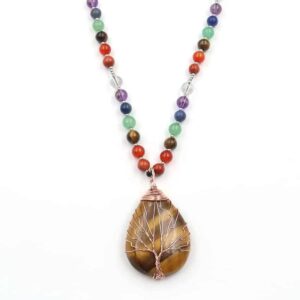 Tiger’s Eye Tree Of Life Pendant Seven Chakra Mala Beads Necklace
Tiger’s Eye Tree Of Life Pendant Seven Chakra Mala Beads Necklace -
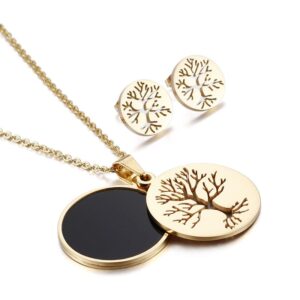 Gold Silver Titanium Steel Round Tree of Life Pendant & Earring Set
Gold Silver Titanium Steel Round Tree of Life Pendant & Earring Set -
 Ancient Silver Gold Alloy Celtic Tree Of Life Hollow Pendant
Ancient Silver Gold Alloy Celtic Tree Of Life Hollow Pendant -
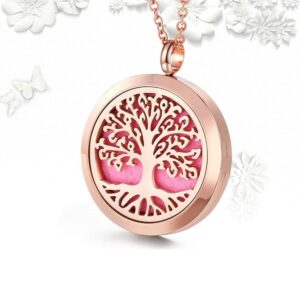 Rebirth Tree of Life Symbol Pendant Stainless Steel Necklace
Rebirth Tree of Life Symbol Pendant Stainless Steel Necklace
In the visual arts, the Tree of Life has been depicted in different forms such as tapestries, sculptures, paintings, and drawings. This diversity is an indication of the tree’s adaptability as a motif that can be used to express different emotions, philosophies, and cultural diversity. The beauty and complexity of the Tree of Life are what makes it such a powerful visual symbol. With its intricate branches and leaves, the Tree of Life can evoke feelings of awe, serenity, and mystery, as the viewer contemplates the vastness of life and the infinite possibilities hidden within it.
The Tree of Life has also played a significant role in numerous religions. For instance, in Christianity, the Tree of Life represents immortality and life after death. As a symbol, it is a reminder that death isn’t the end, but the beginning of a new spiritual journey. It is said in the Bible that Adam and Eve were forbidden to eat from the Tree of Life within the Garden of Eden, but after their fall, God closed the Gate of Eden, making the Tree of Life unreachable for humanity. However, this changed when Jesus died on the cross and opened the path to eternal life once again.
In modern times, the Tree of Life has found its place in pop culture, especially in the film industry. The most notable example of this is the film ‘The Tree of Life,’ directed by Terrence Malick. The movie skillfully uses the tree as a metaphor to represent the cyclical nature of life and death. The Tree of Life, in the film, connects the small and mundane experiences of our lives to the vast and magnificent universe, creating a sense of wonder, awe, and appreciation for the beauty that surrounds us all.
The Tree of Life continues to be a symbol that inspires, fascinates, and captivates people worldwide. With its deep-rooted symbolism and the beauty inherent in its visual forms, it has become one of the most recognizable and enduring symbols in human history. Whether it’s for its symbolism, beauty, or simple yet powerful representation, the Tree of Life remains a part of the cultural and artistic landscape of the world. Its message, that all beings and things are intricately connected, and that life is both universal and individual, stands to bring us together and inspire us to live life to the fullest.
Which tree is known as the tree of life?
The Baobab tree is commonly known as the Tree of Life. It’s a widespread tree in Africa, and it’s easily recognized by its stout, bottle-shaped trunk, and thick branches. This tree can grow up to 20 meters tall and can live for over 1,000 years. The Baobab tree is so important that it’s a “sacred” symbol in African traditions. In fact, the Baobab is linked to creation stories and is believed to have played a part in shaping the African landscape.
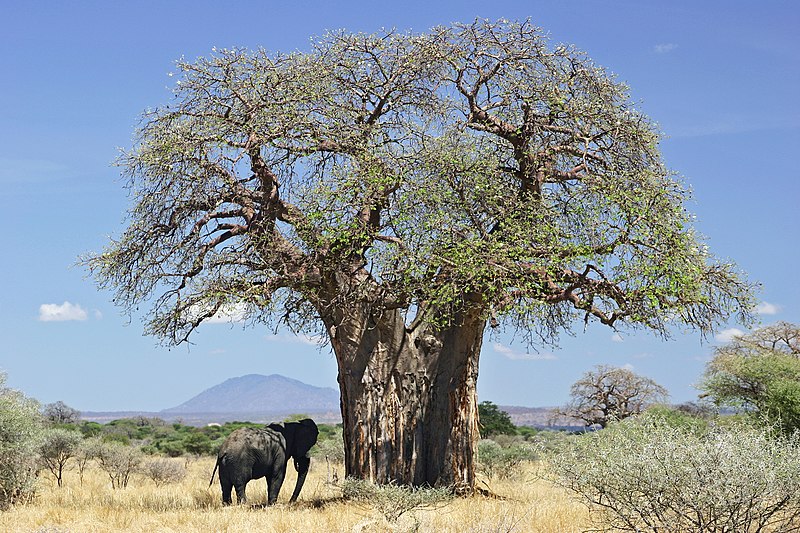
One of the reasons the Baobab tree is called the Tree of Life is because it gives life to both humans and animals. The tree is known for its nourishing fruits, which contain high levels of vitamin C, calcium, and other essential nutrients. The leaves of the Baobab tree are also rich in minerals and are used in traditional medicine to treat a variety of ailments. The bark of the Baobab is used to make clothing, rope, and paper, and the tree also provides shelter for animals during the hot African summer.
The Baobab tree is also known for its ability to store water in a dry environment. During the rainy season, the tree absorbs water, storing it in its thick trunk and branches. When water is scarce, both animals and humans can extract water from the tree’s trunk. This fact makes it an essential tree in regions where access to water is limited.
Aside from its practical uses, the Baobab tree also has spiritual significance. In many African cultures, the Baobab tree is considered a sacred site where people offer prayers and make offerings to their ancestors. The tree has a fascinating story, and its longevity is an inspiration to many cultures.
The tree’s practical uses, impressive longevity, and spiritual significance make it a vital part of African traditions. The Baobab tree is an icon, a symbol of resilience, and the Tree of Life. The conservation and preservation of this tree are essential today more than ever, given the African climate’s changes and the increasing demand for its products. Let’s appreciate and honor this tree and recognize its importance, as it has done and continues to do wonders for the people living in its vicinity.
What religion has the Tree of Life?
The tree of life is a popular symbol that has been depicted in various religions and cultures throughout the world. It has been mentioned in various holy scriptures, including the Bible and the Quran, as well as in ancient mythology. However, the interpretation of the tree of life and its significance in different religions varies greatly. Let’s explore the different religious beliefs around the world that have the tree of life as a central theme.

Christianity
In Christianity, the tree of life is mentioned in the Bible’s Genesis where it grows in the Garden of Eden. It represents eternal life and the everlasting love of God. In the book of Revelation, the Bible also talks about a new tree of life that will grow in heaven, bearing fruit each month for the healing of the nations.
Judaism
In Judaism, the tree of life is said to have healing powers and represents the Torah – the divine teaching and guidance of God. The Kabbalah, a part of Jewish mystical tradition, also teaches about the importance of the tree of life as a symbolic representation of creation and the divine order.
Islam
In Islam, the tree of life is mentioned in the Quran as the tree of immortality, which is present in the garden of paradise. It is also believed to be the tree under which Prophet Muhammad received his prophetic mission.
Hinduism
In Hinduism, the tree of life, also known as the Kalpavriksha, is considered a wish-fulfilling tree that can grant any material desire. It is also believed to be the source of all creation and the place where the gods reside.
Norse Mythology
In Norse mythology, the tree of life, also known as Yggdrasil, is depicted as a massive ash tree that connects the nine worlds of the universe. It represents the cycle of life, death, and rebirth, and its roots and branches symbolize the connections between humans, gods, and all things in the universe.
Throughout history, the tree of life has been a symbol of various religious and cultural traditions, representing the cycle of life, death, and rebirth, immortality, wisdom, and divine guidance. Understanding the tree’s symbolic significance in different religions provides us with insights into these cultures’ values and beliefs. The tree of life can inspire us to focus on spirituality and the role we can play in the universe’s interconnectedness.
What is the Buddhist Tree of Life?
The Buddhist Tree of Life is an ancient symbol that represents the interconnectedness of all living beings. Also known as the Bhodi Tree or the Tree of Enlightenment, it’s a vital element in Buddhist iconography, literature, and philosophy. But what exactly is it, and why is it so important to Buddhists? Let’s dive deeper into the sacred meaning of the Buddhist Tree of Life, exploring its history, symbolism, and significance to this day.
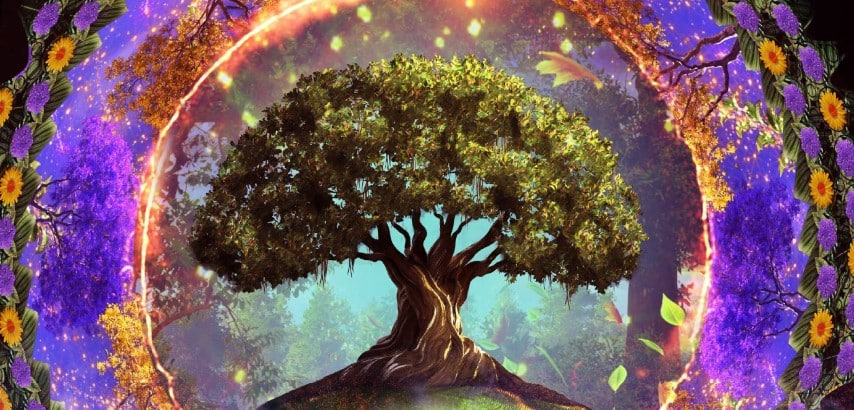
The Tree of Life is an ancient symbol that predates Buddhism, with roots traced back to ancient times in various cultures from around the world. However, in Buddhist belief, it holds a particular significance as it represents the place where Buddha attained enlightenment. It’s said that the Buddha sat under a fig tree, known as the Bhodi tree, and reached total enlightenment at the age of 35. This sacred experience became the foundation of Buddhist philosophy and the main reason for the tree’s significance.
The tree’s symbolism in Buddhist belief is vast and deep, representing different aspects of Buddhist philosophy. Its roots depict the origin of suffering (dukkha), the trunk represents the Four Noble Truths, while the branches represent the Eightfold Path. Moreover, the leaves of the tree are often depicted in the Buddhist scriptures, known as the Triptaka. The tree, therefore, is seen as the embodiment of enlightenment and the path to follow.
Apart from its philosophical significance, the Tree of Life in Buddhism is also regarded as a symbol of natural balance and the interconnectedness of all life. The tree’s branches and roots create a circular pattern that represents the flow of energy, often known as Prana or Qi. This flow represents the cycle of life and death, and it’s believed that everything ultimately returns to the tree, creating a never-ending circle of life.
In addition to that, the Bodhi tree is also considered sacred because of its medicinal properties. The tree’s leaves, fruits, and bark are used for various healing purposes, from treating asthma and inflammation to purifying the blood and easing stress. It has also been used in traditional Ayurvedic medicine to help with sleep disorders since the leaves contain compounds that promote relaxation and calmness.
The Buddhist Tree of Life represents a fundamental concept in Buddhist philosophy, illustrating the interconnectedness of all living things and the path to enlightenment. Its symbolism is deep, encompassing the flow of energy, the natural balance of life, and the healing properties of nature. As such, it continues to inspire and enlighten us to this day, reminding us that everything is connected, and together we can create a more peaceful and harmonious world.
What did God say about the Tree of Life?
The Tree of Life is often mentioned in the Bible, and its significance has been the subject of various debates among scholars and theologians. Some have interpreted it as a symbol of eternal life, while others view it as a tangible representation of God’s grace and provision. Let’s explore what God said about the Tree of Life and what it means for us as believers.

The Tree of Life in the Garden of Eden
The Tree of Life first appears in the Book of Genesis, where it is described as being in the Garden of Eden. God created Adam and Eve and placed them in the Garden, instructing them to eat from any tree except one: the Tree of the Knowledge of Good and Evil. However, nothing was said about the Tree of Life until after they had disobeyed God and eaten from the forbidden tree. God then banished them from the Garden and prevented them from eating from the Tree of Life, saying that they would surely die if they did (Genesis 3:22-24).
The Tree of Life in Revelation
The Tree of Life is also mentioned in the Book of Revelation, where it is described as being in the New Jerusalem, the heavenly city where believers will dwell with God forever. In Revelation 22:2, it says that “On each side of the river stood the tree of life, bearing twelve crops of fruit, yielding its fruit every month. And the leaves of the tree are for the healing of the nations.” This passage suggests that the Tree of Life is a source of nourishment and healing for those who partake of it.
The Significance of the Tree of Life
So what does the Tree of Life symbolize? Many scholars believe that it represents eternal life, as it is described as bearing fruit every month and having leaves that can heal nations. In this sense, the Tree of Life is seen as a promise of eternal life for those who believe in God and follow His ways. It also signifies God’s grace and provision, as He created it to be a source of nourishment and healing for humanity.
The Importance of Seeking God’s Fruit, not the Fruit of the World
In a world where many things promise fulfillment and happiness, it is easy to become distracted and seek happiness from the wrong sources. However, the Tree of Life reminds us that true fulfillment and joy come only from God. When we seek His fruit, we experience His grace and provision, which sustain us and satisfy us in ways that the fruit of the world cannot. As believers, our focus should be on seeking and abiding in Christ, allowing Him to nourish and sustain us with His life-giving fruit.
The Invitation to Partake of the Tree of Life
Finally, we must recognize that the Tree of Life is not just a symbol, but a real source of life and healing. In Revelation 22:17, it says, “The Spirit and the bride say, ‘Come!’ And let the one who hears say, ‘Come!’ Let the one who is thirsty come, and let the one who wishes take the free gift of the water of life.” This passage invites us to partake of the Tree of Life, to come to Christ, and find true fulfillment in Him. We receive this life-giving gift through faith in Christ, which opens the door to eternal life and the joy of being in His presence forever.
The Tree of Life is a powerful symbol of God’s grace, provision, and promise of eternal life. It reminds us that true fulfillment and joy come only from God and that we must seek His fruit, not the fruit of the world. Through faith in Christ, we have access to the Tree of Life, and we can experience the life-giving nourishment and healing that it provides. May we always seek God’s fruit and find our true fulfillment and joy in Him.
What does the Tree of Life symbolize in Judaism?
The Tree of Life is an extremely popular symbol that has been depicted in various religions and cultures worldwide. While many know it as a sign of renewal and hope, in Judaism, this iconic symbol has a unique significance. It is often a crucial symbol in Jewish art, literature, and design, representing the Torah’s essence and the relationship between God and his people. Let’s explore the true meaning and significance of the Tree of Life in Judaic culture.
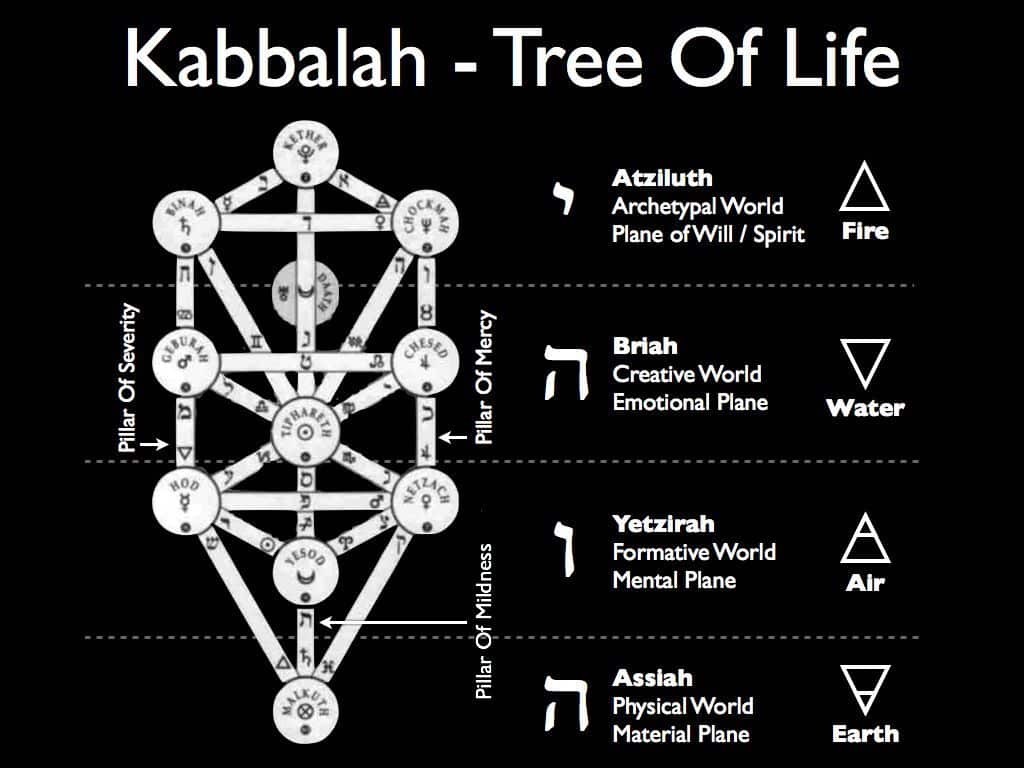
The Tree of Life is called Etz haChayim in Judaism. It is a vital symbol that represents many different aspects of Judaic culture, including the importance of the Torah and the relationship between God and man. The Tree of Life is often used to represent the Torah in Jewish teachings, depicting the idea that the teachings of the Torah are a source of life that provides for a deeper connection with God. In Jewish art and literature, the tree is an important symbol that reflects a deep understanding of tradition and the Jewish faith.
In Judaism, the Tree of Life symbolizes the connection between God, the world, and humanity. It connects the heavens to the earth, the divine to the mundane. It represents the idea that sustenance and life come from God, and his creation may benefit from prayer and faith. The Tree of Life symbolizes that the teachings of the Torah can help us access God’s blessings and be fulfilled spiritually.
The Tree of Life is also significant in the Jewish understanding of creation. It represents the Tree of Knowledge that was present in the Garden of Eden, where Adam and Eve lived. It symbolizes the divine command to remain obedient to God and follow his instructions always. After Adam and Eve ate from the Tree of Knowledge, they understood the terms of the struggle between the material and the spiritual. The Tree of Life inspires those to learn and follow their teachings.
In the Jewish tradition, people love to look into the scriptures to learn. In the book of Proverbs, the Tree of Life is mentioned to symbolize the Torah’s role in giving joy and prosperity in life. It means that the Torah is a sign of life, hope, and righteousness. It says that he who trusts God and follows his teachings will inherit the right to taste the fruits of the Tree of Life.
In conclusion, the Tree of Life symbolizes various aspects of Jewish beliefs and culture. It is a symbol of the Torah’s teachings, which provide life, hope, and spiritual fulfillment. The Tree of Life is often used in an attempt to replicate the Garden of Eden, a world filled with God’s blessings and the highest spiritual fruits. Through the study of the Torah, one may access the Tree of Life’s benefits and enjoy the fruits of its wealth. The Tree of Life is undoubtedly an iconic symbol that represents the Jewish faith’s dedication to renewing, learning, existing, and reflecting God’s blessings.
What does it mean to wear a Tree of Life necklace?
Jewellery has been around for ages; human beings have adorned themselves for a long time. But as we have evolved, so has the jewelry we wear. Today, people wear jewelry not only for adornment purposes but also to express themselves, their beliefs, and their values. One such popular piece of jewelry is the Tree of Life necklace, and we will explore what wearing this necklace signifies and why it has gained so much popularity in recent years.
-
 Rose & Yggdrasil Tree of Life Yin Yang Positive & Negative Necklace
Rose & Yggdrasil Tree of Life Yin Yang Positive & Negative Necklace -
 Tiger’s Eye Tree Of Life Pendant Seven Chakra Mala Beads Necklace
Tiger’s Eye Tree Of Life Pendant Seven Chakra Mala Beads Necklace -
 Gold Silver Titanium Steel Round Tree of Life Pendant & Earring Set
Gold Silver Titanium Steel Round Tree of Life Pendant & Earring Set -
 Ancient Silver Gold Alloy Celtic Tree Of Life Hollow Pendant
Ancient Silver Gold Alloy Celtic Tree Of Life Hollow Pendant -
 Rebirth Tree of Life Symbol Pendant Stainless Steel Necklace
Rebirth Tree of Life Symbol Pendant Stainless Steel Necklace -
 925 Pure Sterling Silver Owl Tree of Life Pendant Necklace
925 Pure Sterling Silver Owl Tree of Life Pendant Necklace -
 Tiger Eye Stone & Green Jade Orgone Tree Of Life Pendant
Tiger Eye Stone & Green Jade Orgone Tree Of Life Pendant -
 Abalone Shell Drop-Shaped Sacred Tree of Life Necklace
Abalone Shell Drop-Shaped Sacred Tree of Life Necklace -
 Memories Become A Treasure Bible Tree of Life Pendant
Memories Become A Treasure Bible Tree of Life Pendant
The Tree of Life necklace is a piece of jewelry that has been associated with different meanings in various cultures. In general, it is a symbol of life, growth, and strength. The Tree of Life represents the interconnectedness of all beings and is a symbol of the cycle of life. Wearing a Tree of Life necklace is a way of honoring the complex, beautiful, and diverse ecosystem that we all depend on.
In different cultures, the Tree of Life necklace has different meanings. For example, in Celtic cultures, the Tree of Life represents the connection between heaven and earth. In Nordic cultures, it is associated with the Tree of Yggdrasil, which holds the nine worlds. In Judaism, the Tree of Life is associated with the Kabbalah and represents the interconnectedness between God and humanity.
Wearing a Tree of Life necklace can be a way to remind oneself of important values. It can be a reminder to protect and preserve the environment, appreciate diversity, and be aware of one’s interconnectedness with others. It can also be a way to honor ancestry and roots, as representations or memories of family members who have passed, and to celebrate the new branches or growth in your family or community.
Apart from the meaning and symbolism, the Tree of Life necklace has become a fashion trend in recent years. With an increasing number of people desiring to express their values and beliefs through their fashion choices, the Tree of Life necklace has become an attractive option. It’s versatile, it’s fashionable, and it comes in a wide range of styles and designs.
Wearing a Tree of Life necklace is as much about fashion as it is about symbolism. As a symbol, this necklace can remind us of our values, beliefs, and interconnectedness with others. It represents the cycle of life and can be worn to honor family members who have passed or to celebrate new growth. As a fashion accessory, the Tree of Life necklace is versatile, making it an attractive option for people of all ages and styles. It’s not just a piece of jewelry; it’s a symbol of life, growth, and strength in all cultures. So, if you’re looking for a necklace that is both fashionable and meaningful, then a Tree of Life necklace might be the perfect choice for you!
Is it good to wear a Tree of Life necklace?
Tree of Life necklaces have become increasingly popular in recent years, with many people wearing them as a symbol of spirituality, connection to nature, and personal growth. But what is the significance of this symbol and why is it so meaningful to so many? Let’s explore the meaning and benefits of wearing a tree of life necklace.
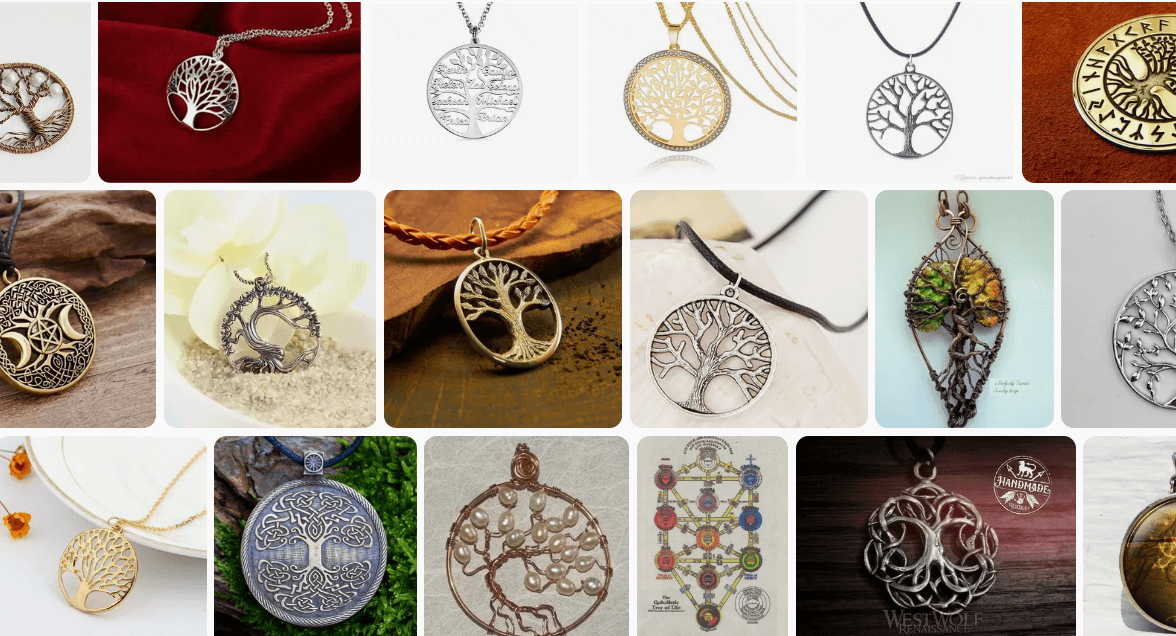
The Symbolism of the Tree of Life
The Tree of Life represents different meanings across different cultures and spiritual practices. In general, it is a symbol of strength, growth, and interconnectedness. It is seen as a representation of the cycle of life, with roots that connect to the earth and branches that reach high into the sky. It is also a symbol of family, with the tree representing the family unit and the branches representing its members.
Connection to Nature
Wearing a tree of life necklace is an excellent way to connect more deeply with nature. The necklace serves as a reminder of our connection to the earth and its natural cycles. It can also be a reminder to take care of the environment and to live in harmony with nature.
Personal Growth
The symbol of the Tree of Life also represents personal growth and development. The branches of the tree grow upward and outward, representing a journey toward higher knowledge, consciousness, and enlightenment. Wearing a Tree of Life necklace can serve as a reminder of our journey and our desire to evolve and become better versions of ourselves.
Fashion and Style
Apart from its symbolic significance, the Tree of Life necklace is also a beautiful and trendy piece of jewelry. It can add a touch of nature-inspired elegance to any outfit, and it’s available in different styles, precious metals, and gemstones. It’s a versatile piece that can be worn during any season, with a casual or formal look.
Gift Giving
The Tree of Life necklace makes an excellent gift for someone special. It’s meaningful and symbolic, making it a unique way to show love, friendship, gratitude, or support.
In conclusion, there are many reasons why wearing a Tree of Life necklace is a good idea. It serves as a reminder of our connection to nature, personal growth, and family. It’s also a beautiful piece of jewelry that adds elegance and style to any outfit. So, whether you choose to wear it for its symbolic meaning, its fashionable design, or as a way to honor a loved one, the Tree of Life necklace is an excellent choice.
Why should I wear the Tree of Life?
Wearing jewelry is an excellent way to display your unique sense of style and personality. If you’re someone who values natural-looking jewelry with deep spiritual symbolism, then perhaps the tree of life necklace or bracelet is for you. The tree of life is an ancient concept that is found in various cultures worldwide. It symbolizes the vitality, strength, and interconnectedness of all living things. Let’s delve deeper into why you should consider wearing the tree of life.

Natural Mind-Body Connection
The tree of life symbolizes the deep connection between a healthy mind and body. As living beings, we rely on trees for oxygen and shelter. Trees also provide various herbs and fruits that are beneficial to our health. By wearing the tree of life, you embrace your connection to nature and become grounded in your spiritual energy. It encourages healthy living and promotes overall well-being.
A Reminder of Personal Growth
Each year, trees grow from the soil to form vast canopies that shield us from the sun, rain, and wind. In the same way, the tree of life symbolizes personal growth and learning. It is a reminder of the resilience of life and that each day offers new growth opportunities. Wearing a tree of life necklace or bracelet can inspire you to take on new challenges and overcome obstacles in life.
Spiritual Significance
In various cultures, the tree of life holds deep spiritual significance. It is often seen as a symbol of the cycle of life, death, and rebirth. The tree’s roots represent the past, its trunk symbolizes the present, and its branches represent the future. The tree of life jewelry helps you feel connected to the divine and reminds you that you are a small part of the larger universe.
Timeless Fashion Statement
The tree of life necklace or bracelet is more than just a piece of jewelry, it’s a timeless fashion statement. The design is simple yet elegant, and it transcends fashion trends that come and go. It can complement any outfit or style, whether you’re attending a formal event or taking a walk in the park. It is versatile, striking, and a remarkable accessory that will elevate your look.
A Unique Gift
The tree of life jewelry is an excellent gift for someone special or a loved one. It is a meaningful way to show them that you value their growth and the deep spiritual connection you share. It is a gift that will endure and remind them of the special bond you share, whether you give it as a birthday present, anniversary gift, or a memento to commemorate a significant achievement.
Wearing the tree of life necklace or bracelet is more than just a fashion statement, it’s a way of connecting to your spirituality and grounding yourself in nature. It promotes healthy living, reminds you of your personal growth, has deep spiritual significance, and is a timeless fashion accessory. So why not embrace the tree of life and add it to your jewelry collection today?
-
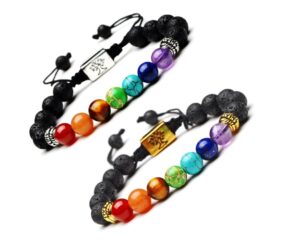 Lava Stone 7 Chakra Beads Rectangular Tree of Life Symbol Bracelet
Lava Stone 7 Chakra Beads Rectangular Tree of Life Symbol Bracelet -
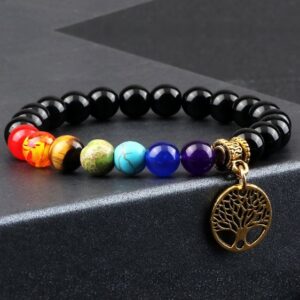 7 Chakra & Black Obsidian Stone Beads With Tree Of Life Yoga Bracelet
7 Chakra & Black Obsidian Stone Beads With Tree Of Life Yoga Bracelet -
 Tree of Life Chakra Bracelet African Jasper
Tree of Life Chakra Bracelet African Jasper -
 Unique 7 Chakra Stones Healing Yoga Sacred Tree of Life Bracelet
Unique 7 Chakra Stones Healing Yoga Sacred Tree of Life Bracelet -
 Imperial Jasper Beads Braided Gold Tree of Life Symbol Bracelet
Imperial Jasper Beads Braided Gold Tree of Life Symbol Bracelet -
 Tree Of Life Natural 8mm Rose Quartz Beads 7 Chakra Bracelet
Tree Of Life Natural 8mm Rose Quartz Beads 7 Chakra Bracelet -
 Tree of Life 8mm Colorful 7 Chakras Black Lava Stone Bracelet 19cm
Tree of Life 8mm Colorful 7 Chakras Black Lava Stone Bracelet 19cm -
 7 Chakra Volcanic Stone Beads Silver Tree of Life Symbol Bracelet
7 Chakra Volcanic Stone Beads Silver Tree of Life Symbol Bracelet -
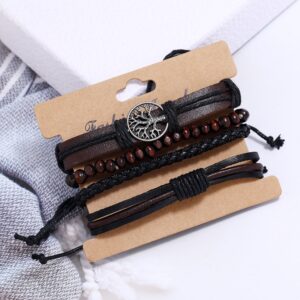 Boho Style Beaded Leather Men’s Tree of Life Symbol Bracelet
Boho Style Beaded Leather Men’s Tree of Life Symbol Bracelet
Where did the Tree of Life necklace come from?
The tree of life necklace is a popular and meaningful piece of jewelry that has been worn for centuries. It is a beautiful symbol of the interconnectedness of all living things and has been used to represent a range of concepts, from family to spirituality to personal growth. You may be wondering where the tree of life necklace originated and what its significance is across cultures. Let’s explore the history and meaning behind this beautiful piece of jewelry.
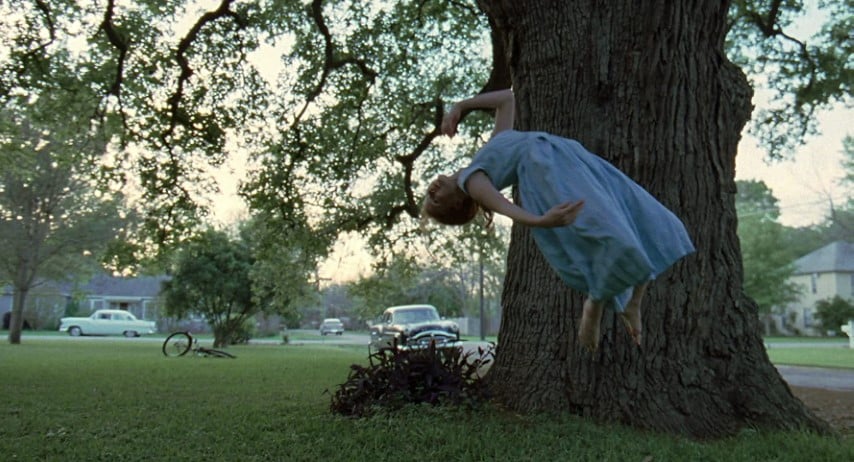
The tree of life has been a powerful symbol throughout human history. In ancient times, the Tree of Life represented the connection between heaven, earth, and the underworld. This symbol has been used across many cultures, including the Greeks, Assyrians, Hebrews, and Egyptians. In the Hebrew Bible, The Tree of Life was located in the Garden of Eden, where it was said to give immortality to those who ate from it. In Norse mythology, the Yggdrasil tree was the world tree, connecting everything in the universe.
The tree of life necklace became popular during the Victorian era when jewelry designers used it to represent family trees. The tree’s roots represented our ancestors, its trunk represented the present, and the branches represented the future descendants. This symbolism became particularly popular in areas where family lineage was of great importance. It is still a staple design in family jewelry today.
The tree of life pendant has also been used to represent spirituality. It is a symbol of personal growth, unity, and strength. It can represent our connection to nature, and our desire to be grounded in the present while looking toward the future. In some cultures, the tree of life is even believed to have healing properties.
Another interesting fact about the tree of life necklace is that it has become particularly popular in Ireland as a means of celebrating St. Patrick’s Day. As Christianity spread throughout Ireland, the tree of life became a popular symbol to represent the concept of the Holy Trinity. Many Irish people wear a Tree of Life necklace to celebrate their heritage, Irish pride, and love of all things green.
In conclusion, the tree of life necklace is a rich and meaningful symbol that has been a part of human history for centuries. Whether we wear it to honor our ancestors or to represent our connection to the earth, it is a beautiful piece of jewelry that connects us all to something greater than ourselves. It has evolved but continues to carry great significance across cultures and communities. We hope this journey through the history of the Tree of Life necklace has inspired you to consider adding one to your collection!
Is it lucky to wear a Tree of Life?
The Tree of Life is considered a sacred symbol of many cultures. It is often depicted as a tree with branches and roots representing the interconnection of all living things. However, some people believe that wearing jewelry with a Tree of Life symbol can bring good luck and prosperity. Let’s explore the stories and myths surrounding the Tree of Life and decide if wearing it can help improve your luck.

The symbolism of the Tree of Life dates back to ancient civilizations, such as the Persians, the Celts, and the Norse. It is believed that the Tree of Life represents the connection between the physical and spiritual realms. In some cultures, the Tree of Life is also associated with fertility, growth, and rebirth. The Celts, for example, believed that trees were gateways to the Otherworld, a mystical realm where spirits and gods resided. They also believed that wearing jewelry with Tree of Life symbols could grant them access to this realm and increase their chances of success and prosperity.
In Hinduism, the Tree of Life symbolizes the balance between opposing forces, such as good and evil, life and death, and creation and destruction. It is also associated with the concept of karma, which means that every action has a consequence. Wearing a Tree of Life pendant or charm is believed to attract positive energy and balance to the wearer.
The Tree of Life symbol also has its roots in Christianity, where it represents the life and teachings of Jesus Christ. The Bible mentions the Tree of Life in the Book of Genesis and the Book of Revelation. In Christianity, the Tree of Life is a symbol of eternal life and spiritual nourishment. Many Christians wear Tree of Life jewelry as a reminder of their faith and connection to God.
But is the Tree of Life really a lucky charm? While there is no scientific proof that wearing a Tree of Life symbol can improve your luck, there is no harm in trying. If wearing a Tree of Life pendant or charm makes you feel more connected to the universe and gives you a sense of positivity, then it might help improve your mood and overall well-being. Some people even claim that wearing Tree of Life jewelry has helped them overcome obstacles and achieve their goals.
In conclusion, the Tree of Life symbol has a long and rich history that goes beyond its use as a lucky charm. It represents the interconnectedness of all things in the universe and the balance between opposing forces. While there is no guarantee that wearing Tree of Life jewelry will bring you good luck, it can certainly be a meaningful and powerful accessory that reminds you of your faith, values, and spiritual beliefs. So go ahead and wear that Tree of Life bracelet or pendant, and see if it brings you the luck and positivity you seek.
Is the Tree of Life a good symbol?
Trees have long been significant symbols in many cultures around the world. From the Sacred Fig Tree in Buddhism to the Bodhi Tree in Hinduism, trees have been a symbol of life and enlightenment. Among all these trees, the Tree of Life stands out as one of the most popular and meaningful symbols. But is the Tree of Life a good symbol? Let’s explore its history, symbolism, and interpretation.
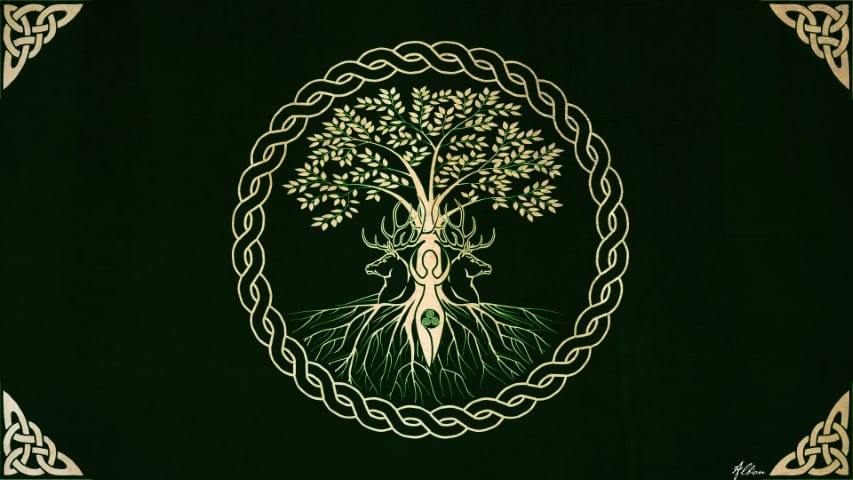
The Tree of Life is a symbol with a long history that can be traced back to ancient cultures such as the Egyptians, Greeks, and Persians. In Christianity, the Tree of Life is mentioned in the Book of Genesis, where it represents the source of life and the connection between God and humanity. Similarly, in Norse mythology, the Yggdrasil tree is a symbol of life, wisdom, and connection to the nine worlds. The Tree of Life has also been used in various forms of art, literature, and culture, from Disney’s The Lion King to Kabbalah’s Sephirot.
Despite its popularity, the Tree of Life has also been controversial, with some questioning its appropriateness and others accusing it of cultural appropriation. Some argue that the Tree of Life has been overused to the point of losing its original meaning and becoming a cliché. They believe the symbol should be retired or replaced with other symbols that better represent the diversity of cultures and identities. On the other hand, defenders of the Tree of Life argue that it is a universal symbol that transcends any specific culture or religion. They believe the symbol is open to interpretation and can be used in various ways to inspire growth, renewal, and harmony.
In addition to the symbol’s history and controversy, the Tree of Life can also be interpreted in different ways depending on one’s perspective. For some, the Tree of Life represents physical and spiritual growth, as it is constantly changing, expanding, and adapting. It symbolizes a journey of self-discovery and enlightenment, where one connects with nature, oneself, and others. For others, the Tree of Life represents family, ancestry, and the intergenerational transmission of values and beliefs. The branches and roots of the tree represent different generations and branches of the family tree, showing how we are all connected and interdependent.
In conclusion, the Tree of Life remains a powerful and relevant symbol that has inspired people for centuries. While some may question its overuse or appropriation, others see it as a universal symbol of growth, renewal, and connection. Ultimately, the Tree of Life’s meaning and interpretation are up to us, and we can use it in ways that resonate with our values, beliefs, and experiences. The Tree of Life reminds us that life is a journey and that we are all connected and part of a larger whole. It is a symbol that invites us to reflect on our own lives, our roots, and our aspirations for the future.
-
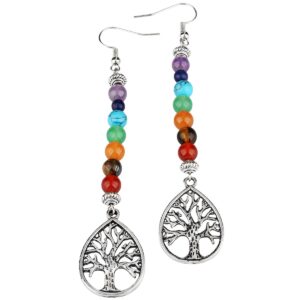 Seven Chakra Tree Of Life Teardrop Shape Dangle Earrings
Seven Chakra Tree Of Life Teardrop Shape Dangle Earrings -
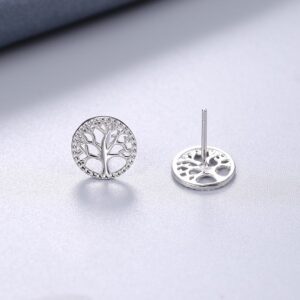 Silver Hollow Women’s Tree Of Life Symbol Stud Earrings
Silver Hollow Women’s Tree Of Life Symbol Stud Earrings -
 Abalone Shell Sterling Silver Celtic Knot Tree of Life Earrings
Abalone Shell Sterling Silver Celtic Knot Tree of Life Earrings -
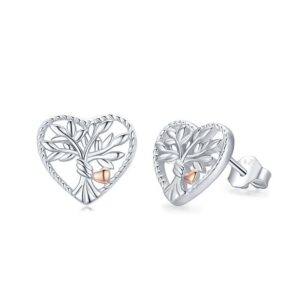 Silver Love Heart Tree of Life Symbol Stud Earrings
Silver Love Heart Tree of Life Symbol Stud Earrings -
 Vintage Multicolor Glass Dome Tree of Life Earrings
Vintage Multicolor Glass Dome Tree of Life Earrings -
 Sterling Silver With Semi-Precious Stone Tree Of Life Drop Earrings
Sterling Silver With Semi-Precious Stone Tree Of Life Drop Earrings -
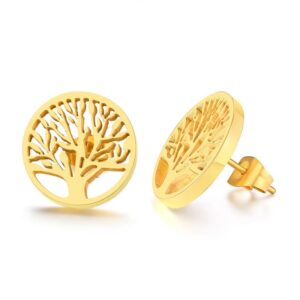 Gold Sacred Tree of Life Symbol Stud Earrings
Gold Sacred Tree of Life Symbol Stud Earrings -
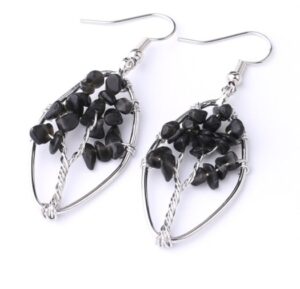 Natural Crushed Crystals Handmade Tree Of Life Earrings
Natural Crushed Crystals Handmade Tree Of Life Earrings -
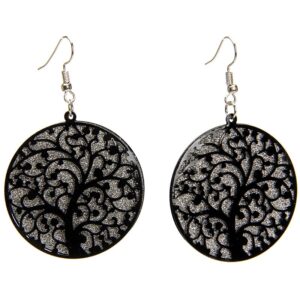 Black Gold Silver Hollow Carved Tree of Life Symbol Earrings
Black Gold Silver Hollow Carved Tree of Life Symbol Earrings
Does Tree of Life have healing properties?
The Tree of Life, also known as the World Tree or the Ancient Tree, is an iconic symbol that has been revered by many cultures throughout history. It represents a connection between heaven, earth, and the underworld, and is often associated with longevity, wisdom, and spiritual growth. But beyond its spiritual implications, some people claim that the Tree of Life has healing properties as well. Let’s take a closer look at this fascinating tree and explore whether or not it has any scientific validity as a healing agent.

The Tree of Life has been used in traditional medicine for centuries, particularly in Ayurveda, an ancient Indian system of holistic medicine. According to Ayurvedic practitioners, the tree has anti-inflammatory, anti-microbial, and anti-cancer properties. The bark, leaves, and fruit of the tree are all used in various remedies, such as treating skin diseases, gastrointestinal disorders, and respiratory ailments.
One of the key components of the Tree of Life is a compound called quercetin, which has been found to have several health benefits. Quercetin is a natural antioxidant that can help to reduce inflammation, boost the immune system, and lower the risk of chronic disease. Additionally, it has been shown to have anti-viral and anti-bacterial properties, which could explain why the Tree of Life has been effective in treating conditions such as colds, flu, and stomach disorders.
Another potential benefit of the Tree of Life is its ability to improve cognitive function. Studies have shown that the tree contains compounds that can stimulate the growth of new brain cells and improve memory, focus, and overall cognitive performance. This could make it a valuable tool in treating conditions such as Alzheimer’s disease, dementia, and other cognitive disorders.
One of the most intriguing benefits of the Tree of Life is its anti-aging properties. Many ancient cultures believed that by consuming the fruit of the tree, one could achieve long life and vitality. While there is no scientific proof that this is the case, there are some studies that suggest that the tree may have anti-aging properties. For example, a study of animals found that those who consumed extracts of the Tree of Life had improved skin elasticity and reduced free radicals, which can contribute to wrinkles, age spots, and other signs of aging.
While there is still much research to be done on the medicinal properties of the Tree of Life, there is no denying that this ancient symbol holds a powerful allure for many people. Whether you believe in its spiritual significance, healing powers, or both, there is no denying that the Tree of Life is a fascinating subject that is worth exploring further.
So, does the Tree of Life have healing properties? While there is no definitive answer, it is clear that this ancient symbol has played an important role in traditional medicine for centuries. Its anti-inflammatory, anti-microbial, and anti-aging properties, along with its potential to improve cognitive function, make it a promising area of research for modern medicine as well. Whether or not you believe in its mystical significance, the Tree of Life is a fascinating subject that continues to capture the imagination of people around the world.
Exploring Other Types of Tree of Life Jewelry
Tree of Life jewelry has been widely popular and loved by many because of the symbolism it carries. It represents growth, strength, and connection to nature. While necklaces are the most popular Tree of Life jewelry worn, there are other types of jewelry that you can rock in your daily wear. They include earrings, bracelets, and rings. In this blog, we will explore these other types of Tree of Life jewelry to help you decide on the perfect type to add to your jewelry collection.

Pendants
Tree of Life pendants come in a variety of styles and designs, from simple to intricate. They can be worn alone or layered with other necklaces, making them versatile. The pendant’s size depends on your preference, but if you’re looking to make a statement, go for a bigger one. Since the necklaces are close to the heart, it’s a reminder to stay rooted and connected to your family or loved ones.
Bracelets
Tree of Life bracelets are stylish and unique. They’re perfect for people who enjoy wearing jewelry but don’t want anything too bulky or heavy. You can find them in various colors and designs, including a simple charm design or a multi-charm bracelet. If you’re looking for thoughtful gifts for your loved ones, a Tree of Life bracelet will never go wrong.
Earrings
Tree of Life earrings come in a range of styles and designs. You’ll find stud earrings, hoop earrings, and drop earrings that feature the Tree of Life symbol. They’re a perfect compliment to any outfit and can add an extra touch of elegance or a boho vibe to your look. For those with multiple piercings, consider pairing different Tree of Life earrings to create a unique look.
Rings
Tree of Life rings are perfect for those looking to add a little nature-inspired touch to their collection. Styles include wraparound rings, signet rings, and statement rings. A Tree of Life statement ring pairs well with any outfit, from casual wear to evening wear.
-
 Silver Green Leaves Tree of Life Adjustable Wrap-Around Ring
Silver Green Leaves Tree of Life Adjustable Wrap-Around Ring -
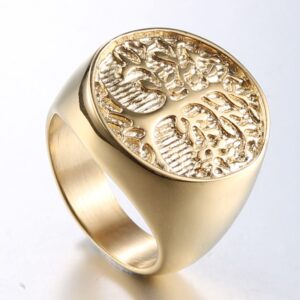 Fashionable Gold Titanium Steel Bible Tree Of Life Ring
Fashionable Gold Titanium Steel Bible Tree Of Life Ring -
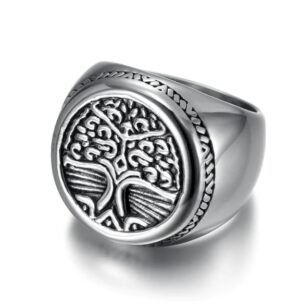 Asgard Handcrafted Stainless Steel Celtic Tree of Life Ring
Asgard Handcrafted Stainless Steel Celtic Tree of Life Ring -
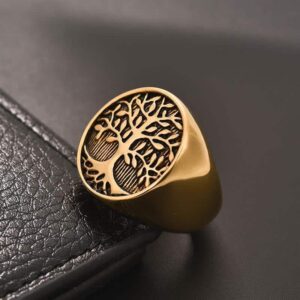 Unique Stainless Steel Bible Tree of Life Symbol Men’s Ring
Unique Stainless Steel Bible Tree of Life Symbol Men’s Ring -
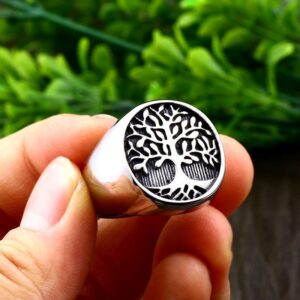 Retro Stainless Steel Sacred Tree of Life Men’s Ring
Retro Stainless Steel Sacred Tree of Life Men’s Ring -
 Zircon Crystals Round Tree of Life Open Adjustable Ring
Zircon Crystals Round Tree of Life Open Adjustable Ring -
 Ancient Silver Kabbalistic Tree of Life Unisex Ring
Ancient Silver Kabbalistic Tree of Life Unisex Ring -
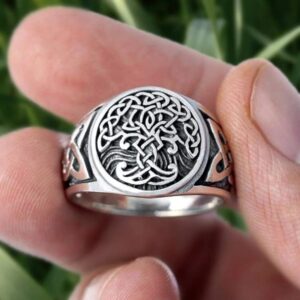 Classic Viking Alloy Celtic Tree of Life Men’s Ring
Classic Viking Alloy Celtic Tree of Life Men’s Ring -
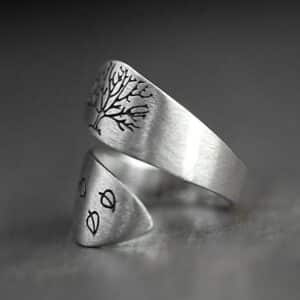 Retro Handcrafted Three-Leaf Tree of Life Ring
Retro Handcrafted Three-Leaf Tree of Life Ring
Where to buy Tree of Life Jewelry?
Tree of Life jewelry is a beautiful addition to any jewelry collection. You can find them in various styles, designs, and sizes, making it easy to choose one that suits you or a loved one. Whether you prefer necklaces, bracelets, rings, or earrings, there’s something for everyone. So go ahead, and add a touch of elegance, nature, and inspiration to your outfits with the perfect type of Tree of Life jewelry.
- Buy Tree of Life Jewelry
- Buy Tree of Life Necklaces
- Buy Tree of Life Bracelets
- Buy Tree of Life Earrings
- Buy Tree of Life Rings
To conclude, taking the time to learn about symbolic meaning and selecting a meaningful tree of life necklace that speaks to you is important. When you wear your chosen Tree of Life necklace with confidence, it will act as a beautiful symbol of peace, calm, and balance in your life. Additionally, wearing such a powerful symbol can bring balance to the masculine and feminine within you – the Yin and Yang – by connecting the lower chakras with higher ones. Therefore, if you are looking for an accessory to represent your path in life on any journey changing course or needing reaffirmation in choices made, don’t look beyond its timeless beauty and elegance. The Tree of Life necklace truly is a multifaceted piece of jewelry with benefits lasting far beyond being fashionable.
